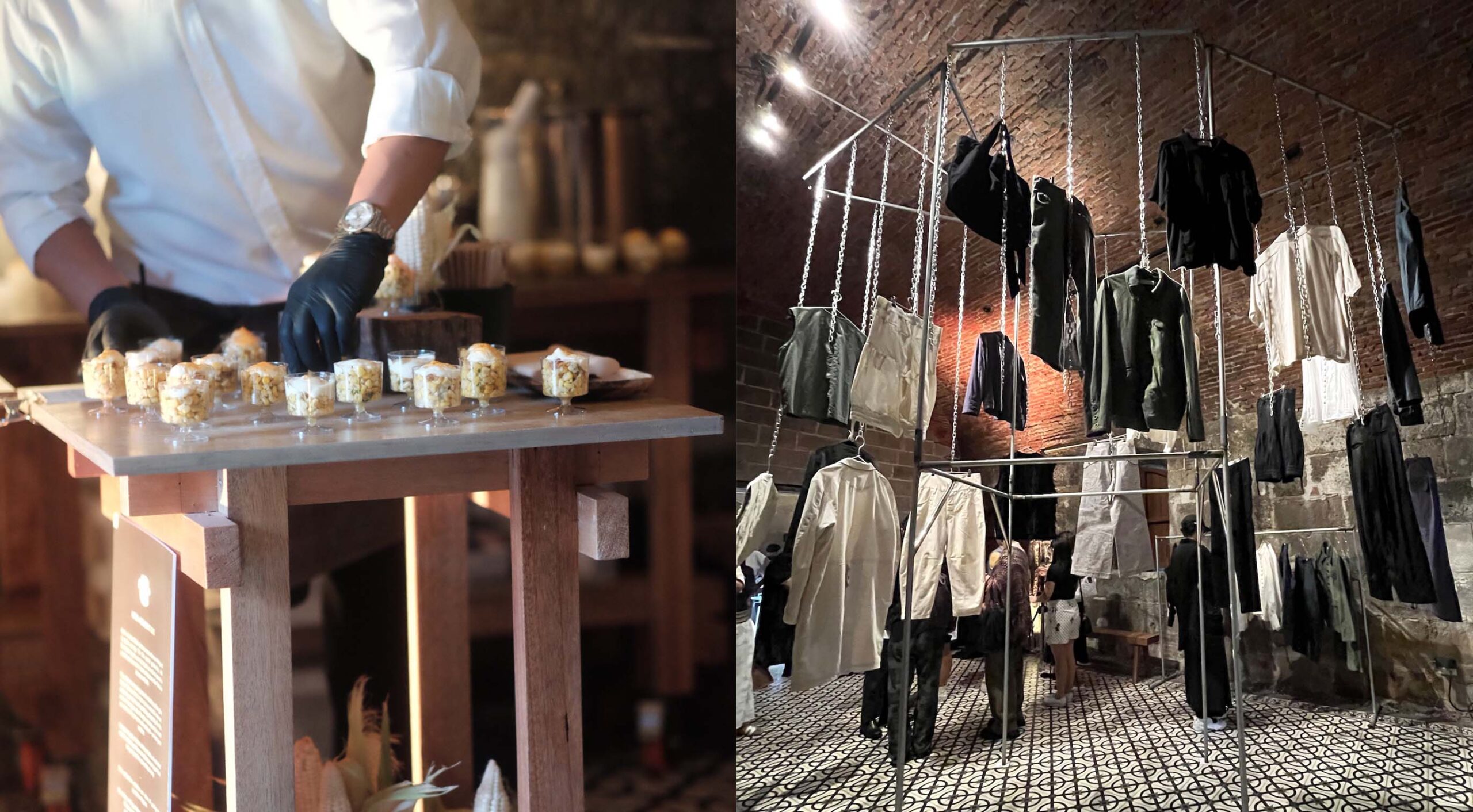Next time you are in Quezon City, consider visiting Toka Wine.
This tiny gem of a wine bar along Katipunan may be sequestered from view but it’s big on charm, fuss-free food, and wines that might just make you appreciate the beverage even more.
There are no secrets here but owner Butz Tenchavez spilled some facts on a rainy afternoon visit. Tenchavez actually supplies wines to some of the most prominent restaurants in Makati and Bonifacio Global City through his five-year-old company Gran Hacienda Wines. Which is why even if you’ve never been to Toka Wine or immersed in its diverse selection of vinos, it feels oddly familiar.
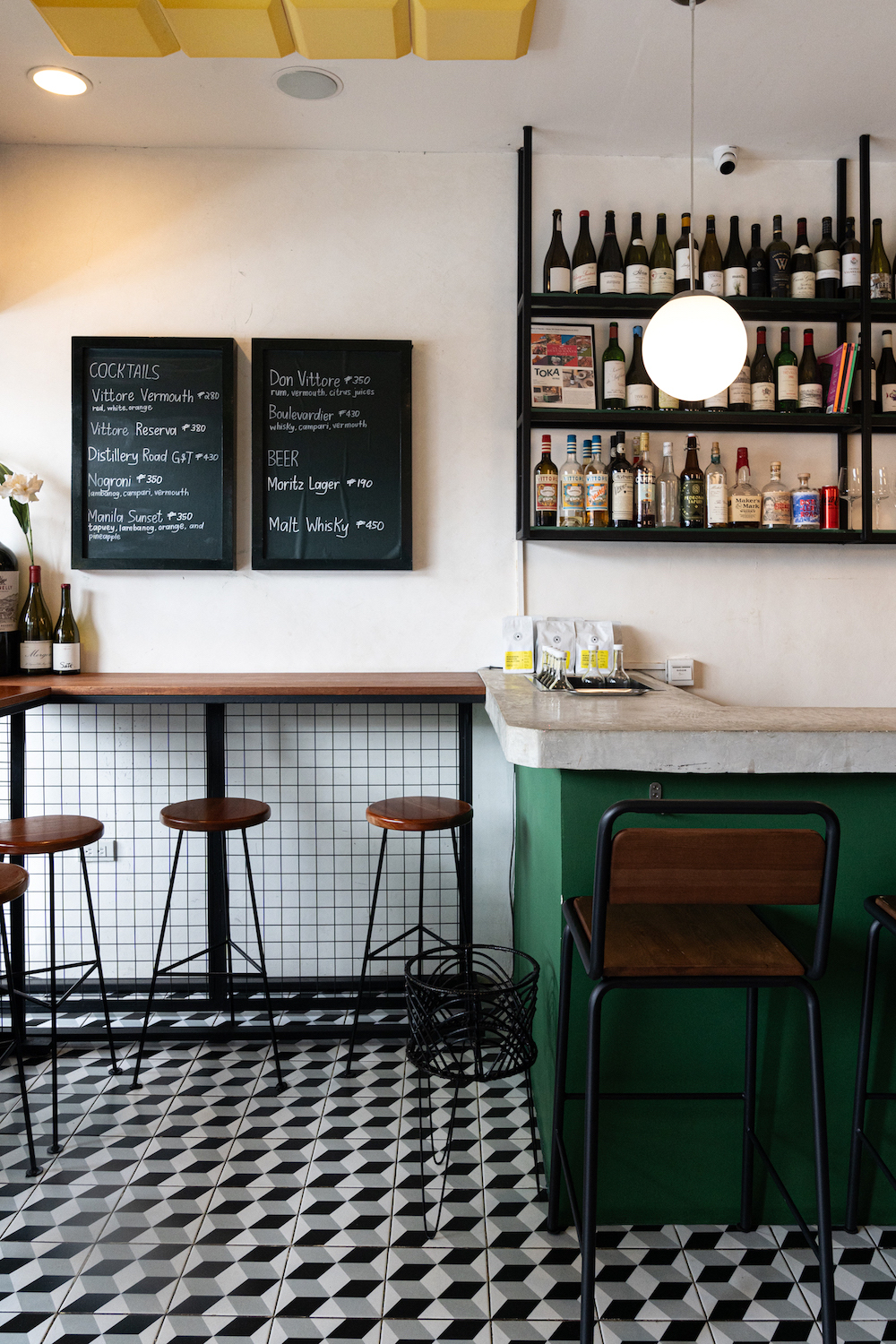
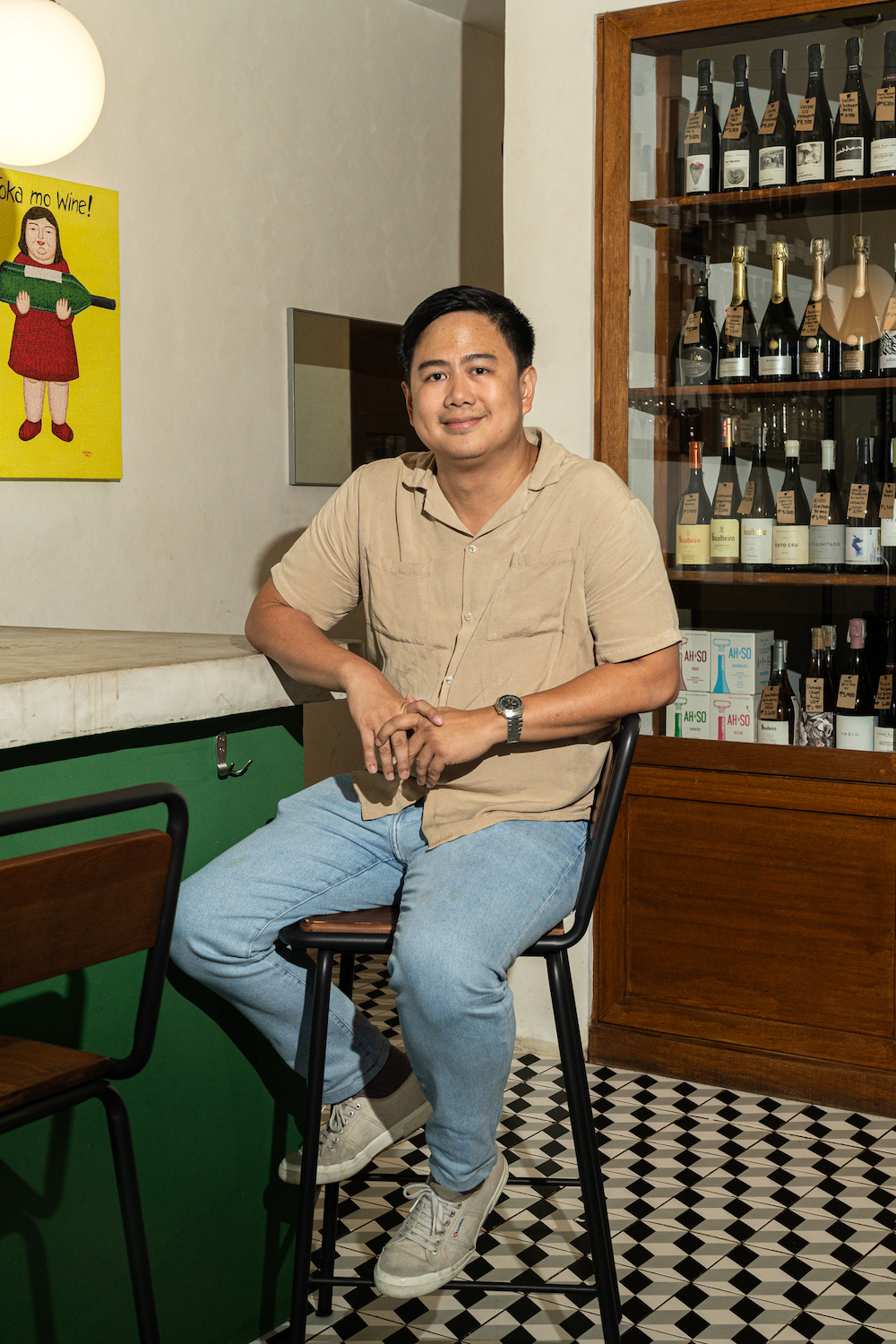
You may have seen a bottle or two here that’s also sitting in the wine cabinets of Blackbird or the coolers of Hapag, and Gallery By Chele but Tenchavez’s “foray” into the restaurant industry is the next logical step.
“We never had the space to really showcase the wines [we import],” says Tenchavez. “Restaurants would only list two wines, maybe three because they would also buy from other importers, but we needed a venue to showcase the full range.”
“We never had the space to really showcase the wines [we import],” says Butz Tenchavez. “Restaurants would only list two wines, maybe three because they would also buy from other importers, but we needed a venue to showcase the full range.”
With an objective to convey an experience of European proportions, Toka Wine bears all the hallmarks of bars found normally in Paris and Madrid. Not only do the wines here carry you away to a specific emotion or feeling, the place—with its mix of custom furniture from Cubao and pieces from Match Contract Furniture, Hanoi cube floor tiles, and vivid art and branding from artists such as Lee Caces—virtually transports you someplace else.
“We wanted a small space that was very accessible because we’re selling wines. And it’s styled very European, specifically Paris, Portugal, Spain where they don’t demand a bigger space; you know, those small Paris bars but they’re churning out [wines in] volume.”
Toka Wine may be tiny but its drinks are ‘big’
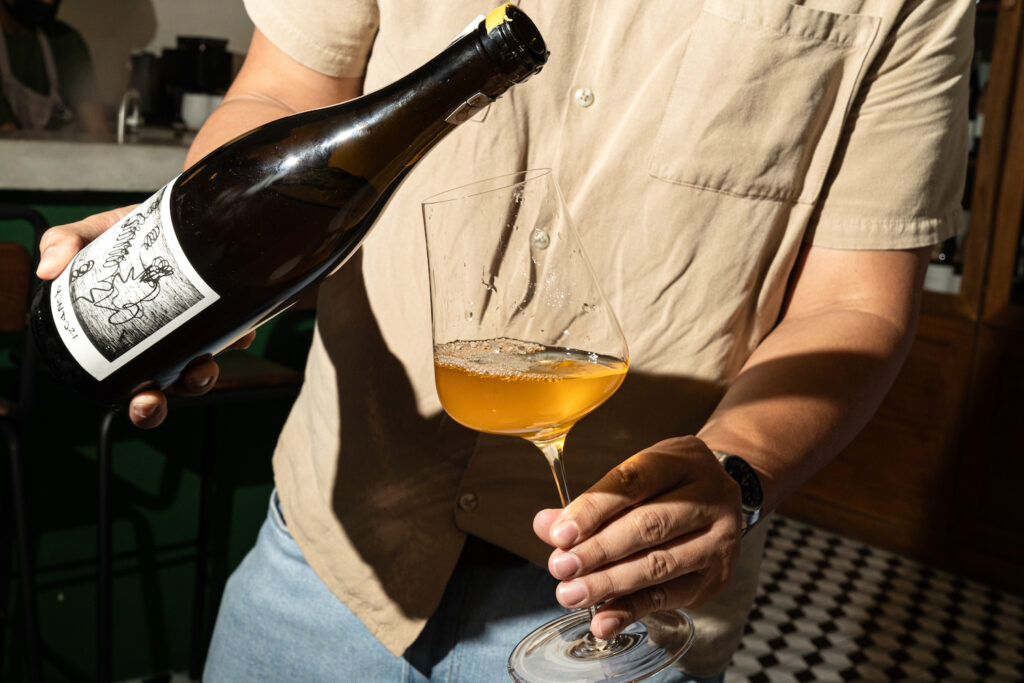
Opened in October 2022, Toka Wine remains a local haunt, a watering hole that isn’t exactly a place to see and be seen but nonetheless a destination worth trekking to, thanks to its massive collection of Old World reds from Spain and Portugal, glorious whites from France, family-run labels, and even organic, naturally produced selections.
Close to 200 from a field of 31 producers to be exact, says Tenchavez. And that’s a lot. “Most wine lists, even in finer places, [only hold] 60 to 80 max.”
Undertaking the reins of an independent wine import and distribution business seems like a huge imposition in a drinking market that’s only breaking the ‘wine barrier’ in recent times and where the margins are admittedly small—but the lovingly displayed bottles in the centerpiece cabinet thinks big into the present and future.
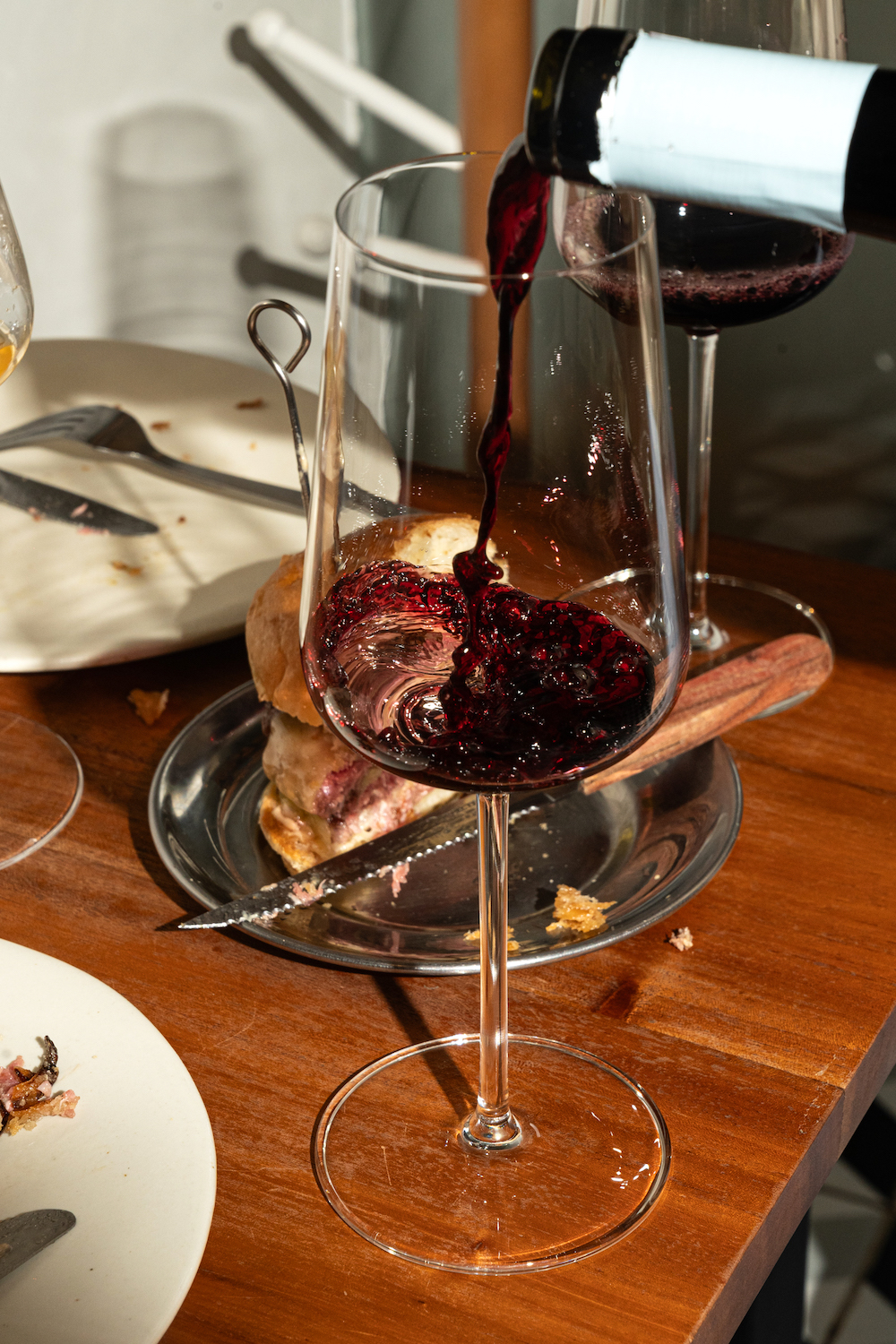
“There’s a bigger demographic now in terms of wine consumption,” shares Tenchavez. “I started drinking when I was 29. Now I see people drink as early as 26 or 25 or 24… they’re already exposed to that by traveling. During my era it was really dominated by the 40s, 50s, very corporate style, big reds, steakhouse reds. Obviously there’s more interest. But still very small.”
There’s a lot to like and love here whether you’re a seasoned vino veteran or a tentative newbie to the delicate art of wine tasting.
“The wines that I represent, besides those family-run labels, are both classic and natural. When I say classic, it doesn’t scream natural. It’s cleaner style, less kombucha,” says Tenchavez, noting that the price points in the bar run the gamut from P600 all the way up to the tens of thousands, with the sweet spot somewhere between P2,500.
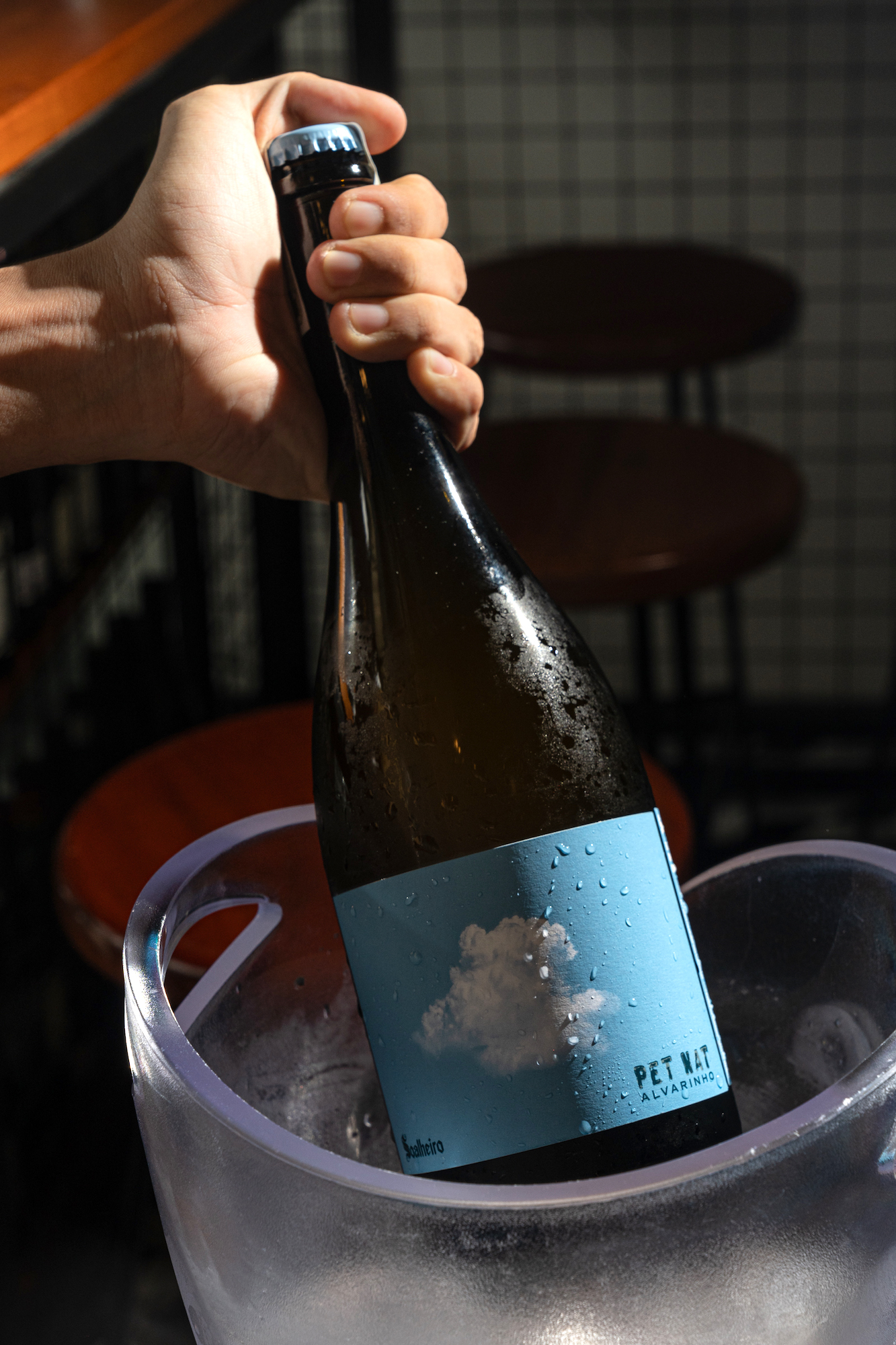
Take for example the no-pressure, credibility-building Portuguese Pet Nat Alvarinho whose cloudy branding complements its fresh, sparkling lightness. Crossing over into the Iberian peninsula comes an orange wine from the ochre plains of Castilla y León called Mondo 21. This natural white wine made from Verdejo grapes is produced by the Cantalapiedra family in Rueda, Valladolid. The first thing you’ll notice about this natural Spanish delight is the beautiful amber color but it possesses a fairly strong acidity that lingers in the mouth. Citrusy and robust all the way down to the finish.
“The wines that I represent, besides those family-run labels, are both classic and natural. When I say classic, it doesn’t scream natural. It’s cleaner style, less kombucha,” says Butz Tenchavez.
“The overall philosophy with the wines is ‘drink small’ as in less big producers, less commercial, less mainstream, and smaller domains. It has to be family-run more than anything. And they have to have an entry level, mid, and premium [price point],” says Tenchavez, which, as he points out, is the reason why customers can usually find three labels of a particular producer.
Simple food that bolsters the wine experience
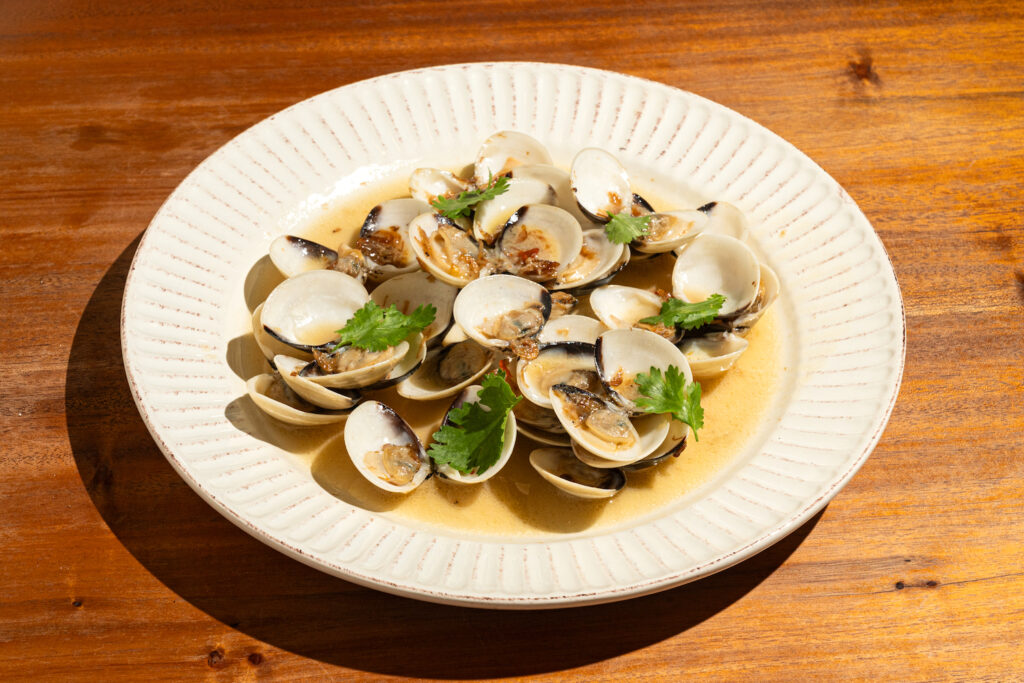
In most cases, the bottles match the energy of the wine-friendly menu culled from Tenchavez’s palate, memories, and travels. The food is enticingly simple without being overly simplistic. Intentional but deceptively flavorsome.
“It’s global. Eclectic but not really wild. And not very crazy,” he says. And true enough, the thoughtful menu is one of the big draws here. Tenchavez shuns “small plates” in favor of “share plates” but no matter how you classify them, the results are instantly memorable.
Make a beeline for the clams with homemade XO sauce and smoked fish croquettes (with a salted egg dip) if you want to revel in umami flavors. Follow it up with strips of eggplant lathered with ‘nduja sauce and sesame before diving into the heavier fare.
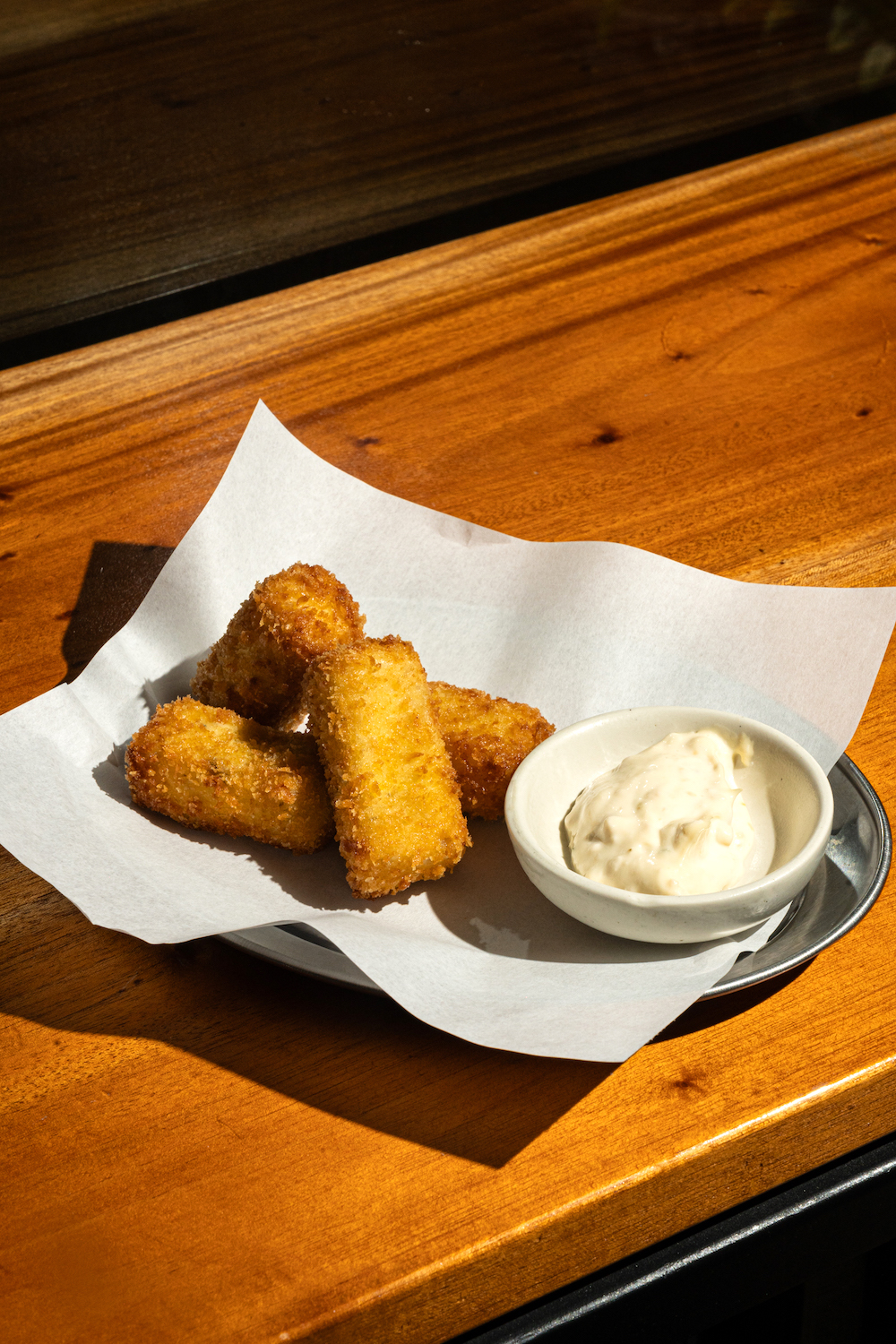
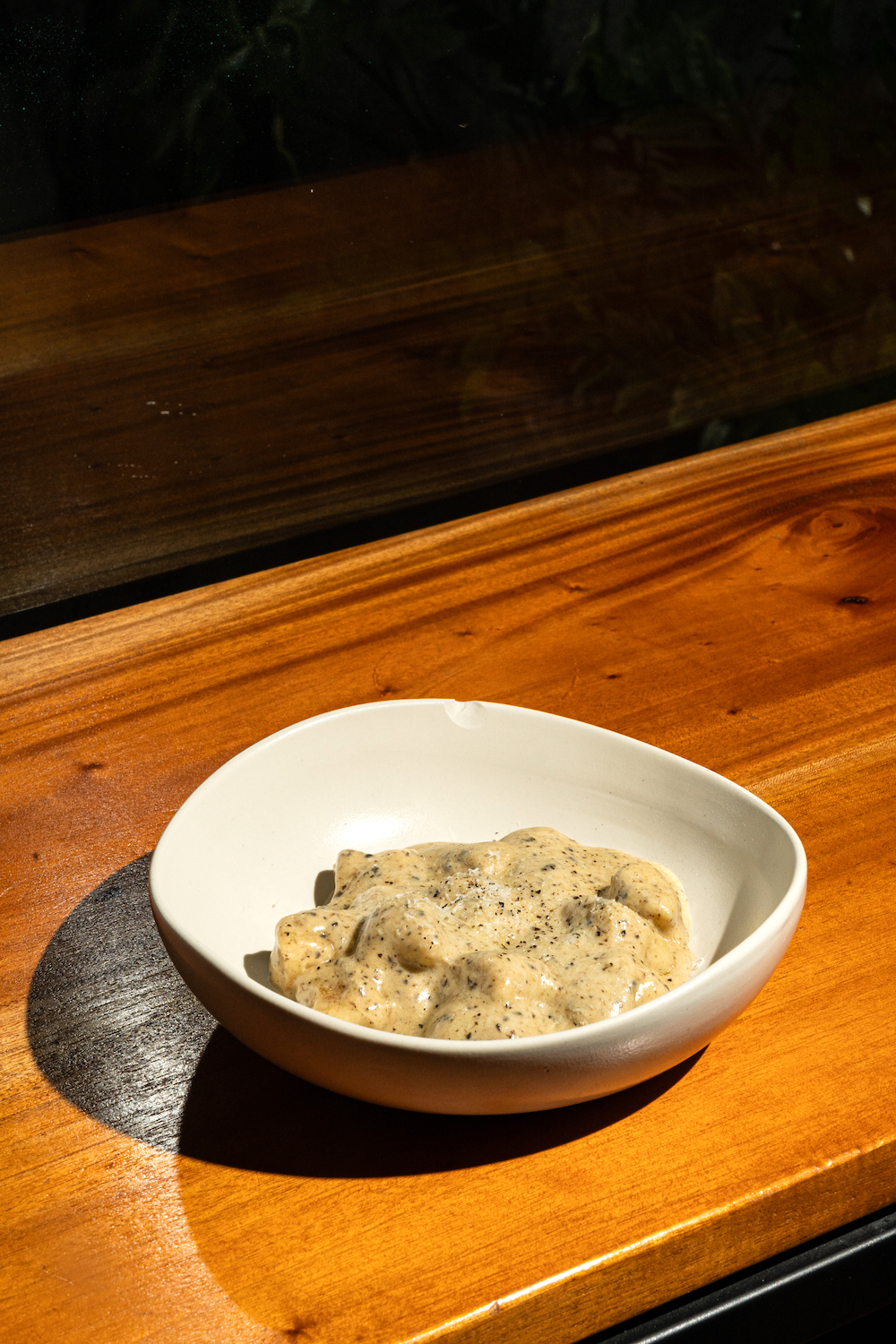
The salty-savory truffle gnocchis (that offer a creamy yet firm bite) are a clear highlight and so is the juicy artisanal Cumberland sausage from One World Butchers atop a bed of stewed white beans with punchy chimichurri. Yet another proof that delicious food doesn’t always need to be fancy.
Don’t sleep on the desserts either as both are surprisingly successful in their simplicity and deft use of ingredients like black sesame on a tart and coconut and ube chocolate on roasted milk ice cream.
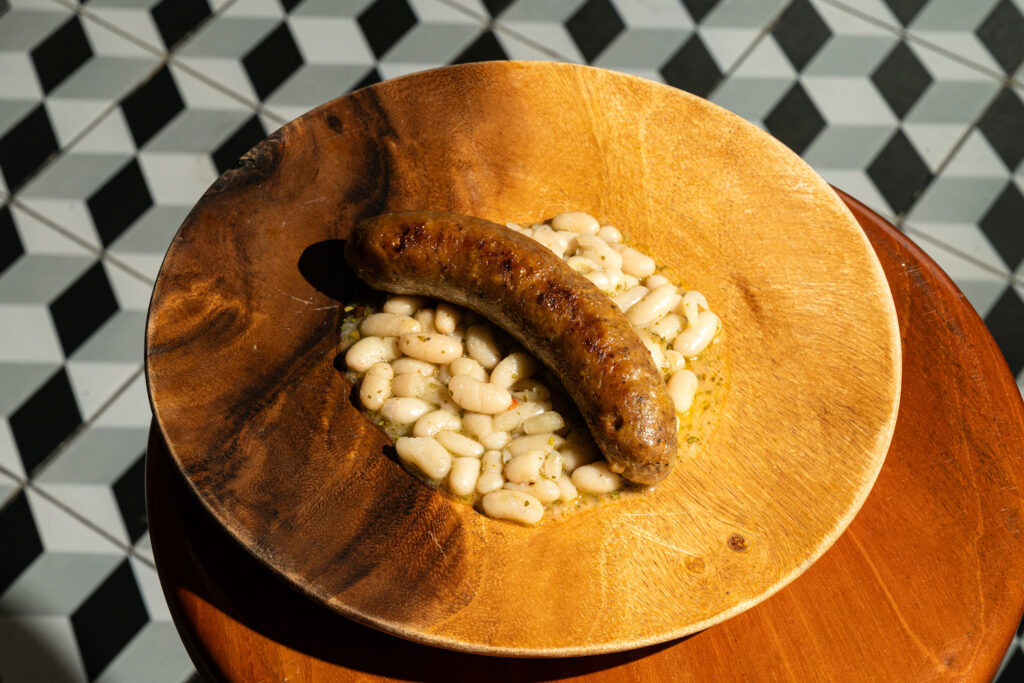
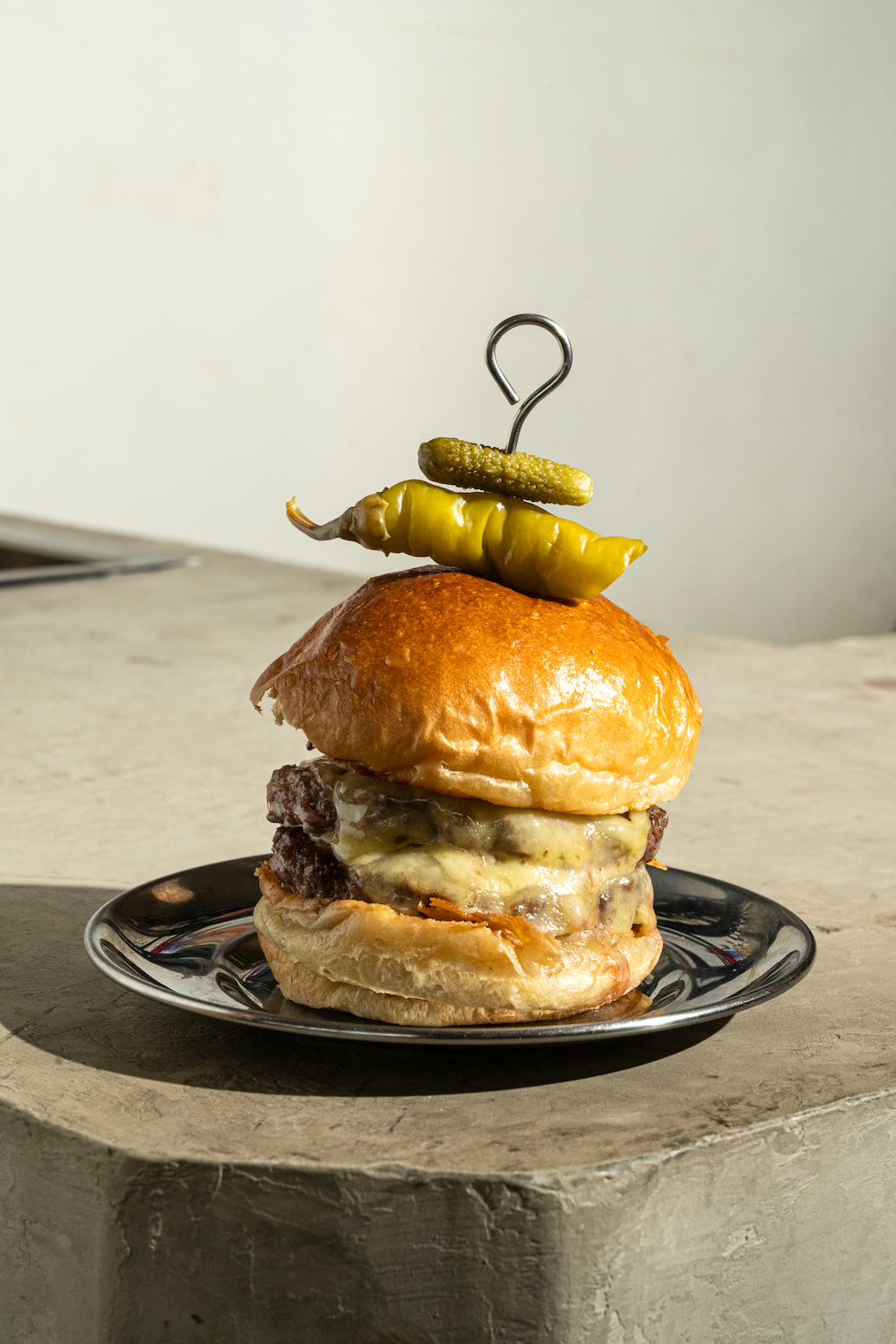
Toka Wines is also jumping on the trendy spate of collaborations. Called Will Host, the series mostly focuses on chefs flying under the radar—like Los Tacos’ Keith Curitana and M 46 Kalea’s Denise Campos—who cook special a la carte dinners meant to serve as another touchstone for Manila’s interesting food and drink scene.
Toka Wine also pairs its drinks with education
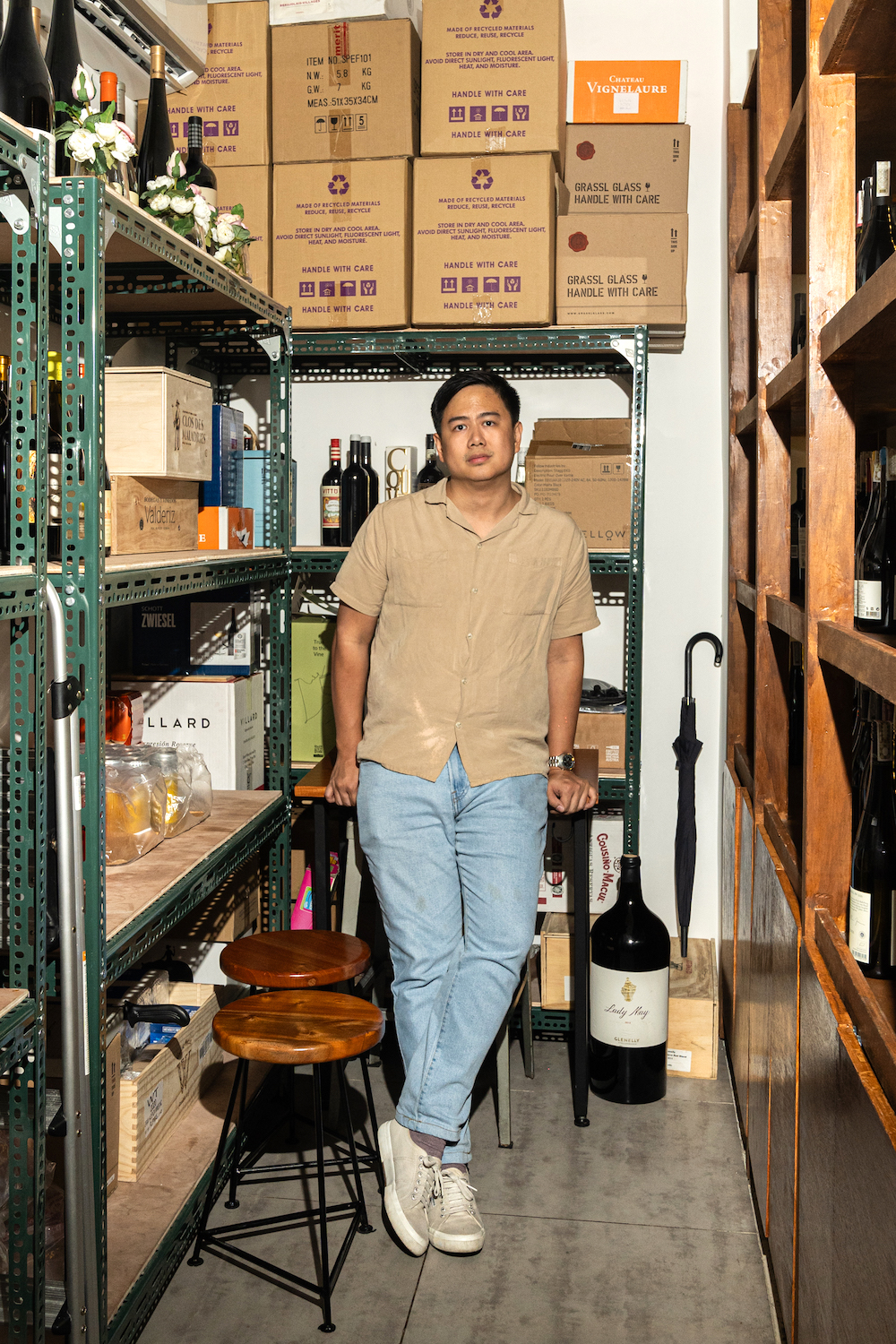
A standout facet that is also at the heart of Toka Wine is education—something that Tenchavez doubles down on when asked about the best way Filipinos can educate themselves about wine.
“Something I would always preach is charge to your palate rather than charge to experience. Generally, if you don’t know, just buy the wine, drink it and if it brings emotion then good but really the best way to learn is via drinking,” he imparts. “Not excessively.”
“Something I would always preach is charge to your palate rather than charge to experience. Generally, if you don’t know, just buy the wine, drink it and if it brings emotion then good but really the best way to learn is via drinking,” he imparts. “Not excessively.”
“Then a little awareness towards that wine. ‘Okay I drank that, let it register in my head.’ The next time, try a different wine. Really charge to your palate more than anything.”
Getting to know a sommelier, distributor, or importer—if feasible—also plays an important role in furthering knowledge about wines. Overseas, typically, you develop a relationship with producers and the people behind the wine akin to the way coffee consumption and production is viewed here where cafes are marked for where their beans are sourced and who the farmers are behind them. We’re not there yet when it comes to wine, “but it pays to know the producer,” echoes Tenchavez.
At the end of the day, the only ‘toka’ you’ll be assigned to here is to whet your appetite and wear your heart on your sleeve—because expressing your thoughts and emotions about a small pleasure like wine is a step towards appreciating more of what these bottles hold.














